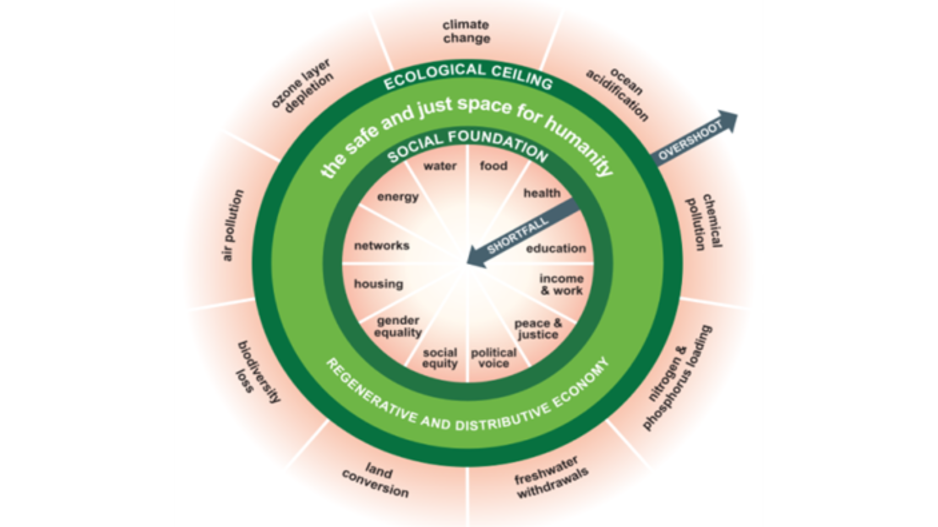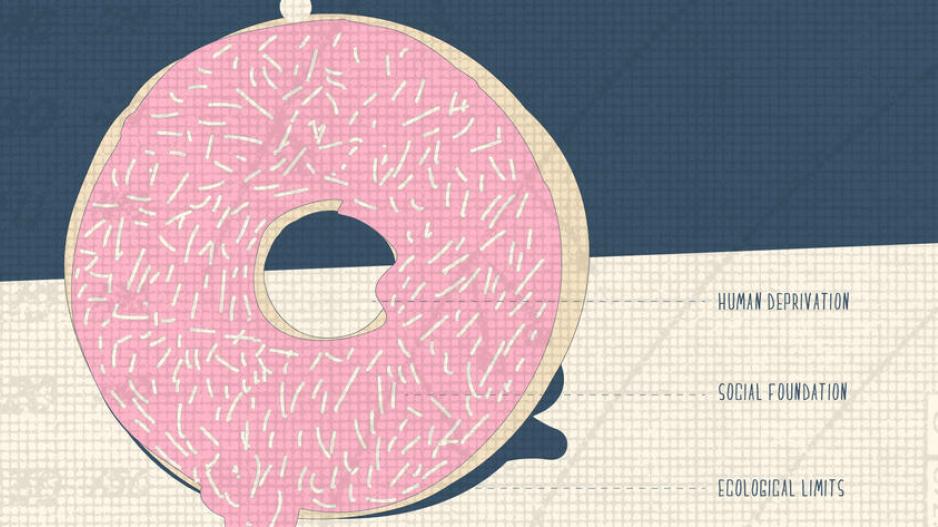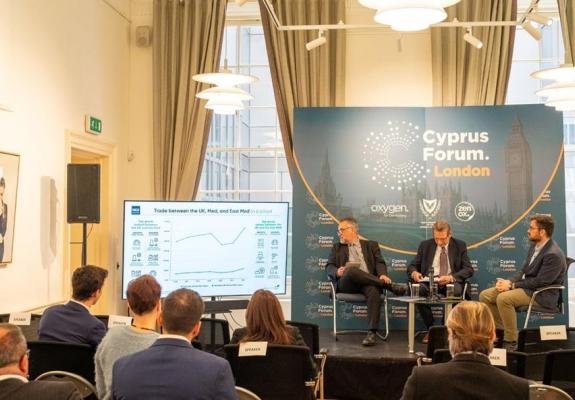The “Doughnut Economy” Model for Sustainable Development
Governments continue to use growth policies based on Gross Domestic Product (GDP) as a key indicator of economic success for various reasons, for example because it is a measurable and universally accepted indicator, linked to employment and welfare, for international comparisons and investment attractiveness, etc. To this day, the governments of the richest countries still believe that the solution to their economic problems lies in strengthening growth for their survival (World Economic Forum, 2022a)[1]. There is a growing criticism that GDP does not consider social and environmental factors such as inequality, poverty, or the environmental impacts of growth. Does the economic strategy approach to development need to envision more long-term benefits and take other factors into account? This is exactly what the "Doughnut Economy" model proposes.
The "Doughnut Economy" model, created by economist Kate Raworth, offers a new approach to economic development, focusing on the balance between human needs and the ecological limits of the planet. The model consists of 2 main cycles (ecological ceiling and social foundation), so that humans can not only survive, but also thrive. The outer circle presents the ecological ceiling and represents an ecological ceiling, protecting the Earth's life support systems. In other words, it defines the ecological limits that must not be exceeded (e.g. climate change, loss of biodiversity, etc.). The inner circle symbolizes the minimum social foundation necessary to ensure that no one on the planet is deprived of the necessities of life, while at the same time defining the social limits that must not be breached (e.g. access to basic needs such as health and education, among others). Between these two circles, an ecologically safe and socially just doughnut-shaped space is created.
The ecological ceiling consists of nine (9) planetary boundaries, as defined by Rockstrom et al, beyond which there is "unacceptable" environmental degradation and potential tipping points in earth systems. The nine (9) planetary boundaries, which represent the Earth's natural limits that must not be violated if we are to ensure planetary stability and sustainable development, are: climate change, loss of biodiversity, changes in land use, ocean acidification, chemical and pollutant pollution, overheating and disruption of the nitrogen and phosphorus cycles, air pollution, overexploitation of freshwater and loss of the ozone layer.
The twelve dimensions of the social foundation are derived from the internationally agreed minimum social standards, as identified in 2015 by all governments of the world in the UN Sustainable Development Goals. The twelve dimensions are water, food, health, education, housing, renewable and affordable energy for all, income and work, peace and justice, gender equality, social justice, the right to participate in decision-making processes, and social safety nets.
Between social and planetary boundaries lies an environmentally safe and socially just space in which humanity can thrive. Taking scientific data into account for an economic development strategy acts as a precautionary measure that increases success rates, especially when the scientific data is grounded in environmental and social well-being. This can have positive long-term effects, as all the above is consistent with large-scale political agendas such as the EU Green Deal and the UN Sustainable Development Goals.

Raworth, K., The Doughnut Economy: Seven Ways to Think Like a 21st Century Economist, Random House Business Books, 2017 (p. 44)
The two circles on the Doughnut can outline the actual picture for each item listed, making the Doughnut a chart that also depicts quantitative information as the evolution of the planetary boundary box is observed[2]. An alternative economic system of the "Doughnut Economy" proposes a future that meets the basic needs of every human being while ensuring the continuity and protection of the natural living world on which we all depend ref. A system that makes us prosper, whether there is economic growth or not. This is the vision on which the Doughnut Economy is based.
Kate Raworth states that in the 20th century, economic growth – GDP - was the most basic policy thinking in economics and that to this day in the richest countries, governments still believe that the solution to their economic problems lies in more growth, a policy that leads to the notion of an economy that embraces growth exclusively for its survival (World Economic Forum, 2022a)[3]. Raworth believes that the issue is to use economic growth to achieve social goals within the confines of the earth, rather than making it an indicator of success, which is an omission of our current economic system. Modern political economy is undergoing a major change, paying more attention to the well-being of people instead of focusing solely on the accumulation of wealth. Doughnut's Economics is an example of this growing knowledge, showing that our economic systems must adapt to be consistent with the closed system of the Earth, as there is a built-in contradiction between the open nature of the economy and the limited limits of our planet.
As overwhelming as it may seem, the thought is correct. If we continue to overload our ecosystem, there is only one possible outcome. The Doughnut Economy can be seen as an insightful response to an emerging problem. It does not provide a clear set of policies or solutions to our social and environmental issues but suggests a different way of thinking that is appropriate for our times. According to Raworth, solutions are not found in a fixed formula, due to the complexity of our world, but in a constant balancing of priorities.
Looking at the overall situation in the world, the concept of "development" no longer seems to enhance the prosperity of countries. Therefore, it is necessary to design a new system that is capable of managing human resources while not ensuring the possibility of a decent life and development for future generations[4].
The "Doughnut Economy" model has already started to be implemented around the world, proving its flexibility as a tool for sustainable development. Major cities such as Amsterdam, Copenhagen, Brussels, Brussels, London and many other[5] are using this model to ensure balanced development, with the ultimate goal of achieving a balance between social well-being and environmental conservation.
Amsterdam was the first city to adopt the Doughnut Economy model for its sustainable development strategy. Guided by Raworth's organisation they created the Doughnut Economics Action Lab (DEAL)[6] . DEAL introduces massive infrastructure projects, employment programmes and new policies for government contracts, integrating social and environmental criteria into decision making. Amsterdam is implementing the "Doughnut Economy" model and monitoring whether its growth stays within ecological limits while promoting social equity, offering a model for other cities around the world to implement the model.[7]
The application of the Doughnut Economy model is also considered as a way to revitalise democracy in modern cities. The Carnegie Endowment article[8] , discusses how cities can use the model to find new forms of participatory governance, ensuring that citizens have an active role in making decisions that affect social and environmental well-being.
In summary, the "Doughnut Economy" model proposes a different approach to economic development, emphasising the importance of the balance between social needs and environmental limits. Its application to cities is very important in demonstrating its ability to guide policies that enhance sustainability and social well-being. As the challenges of overcoming planetary boundaries become more and more acute, the need for a new way of thinking with a different and possibly more holistic approach to development, such as that proposed by the Doughnut Economy, becomes increasingly urgent. Developing a stable balance between social justice and ecological stability can provide a new basis for a sustainable future in which people can thrive within the limits of our planet.






